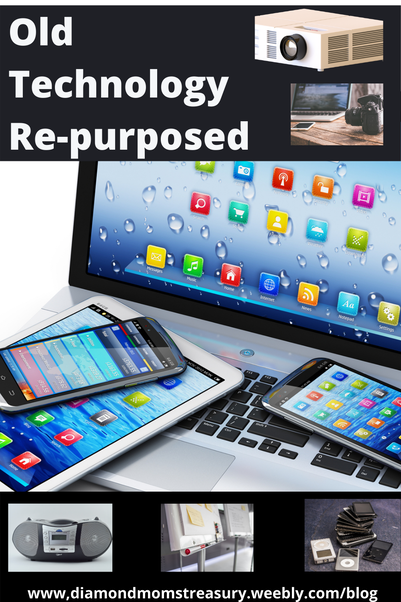|
Don't throw out old technology too quickly, instead re-purpose it. It can still be very useful if used creatively to engage students in their learning. Technology changes so quickly that we sometimes think that we need to have whatever is new and updated in order to use it effectively. However, in most cases, schools don't have the funds to stay on top of the latest and greatest technology. This doesn't mean that we need to stop using technology, it means we need to be more creative with what we have. Children are so tuned into technology nowadays that their attention is captured when technology is included in lessons. Using a projector, computer, and a document camera will immediately engage many students. This can be as simple as putting items under the document camera during sharing time, reading books together, or demonstrating how to fill in a worksheet. More complex activities might include showing video clips or doing interactive activities on the whiteboard. Watching movies or animated books is another way to use a computer and projector. These are pictures of some of the computers that I had in my classroom. Several years ago many of the elementary school computer labs were converted from Mac labs to Linux labs. I gathered several computers and set them up in my classroom. I started out with even older computers, but as the middle schools switched over their labs I was able to "upgrade" to iMacs. They were stand alone computers loaded with many language and math games and activities. They also had an older version of Powerpoint and a word processing program. A few were internet capable, but they ran slowly. Many people think that these computers should have gone to recycling because they were "old". I disagreed. If you don't have lots of money to have laptops and handheld devices, you can still use older technology in your classroom. My students used these computers to write special journal entries, do language and math games during centers, learn keyboarding skills, create powerpoints, and work on other research and writing projects. When they needed to go online, we either booked lab time or I set up one or two computers with the internet. For printing their work, I had a printer networked to the computers. If this wasn't possible, documents were saved on flash drives and then printed from a different computer that was hooked up to a printer. Even a small pod of computers was useful for engaging students. I found that using computers, along with software that assists with writing, helped with my reluctant writers. Smartboards are another popular piece of technology in school now. Unfortunately, they are expensive and not all schools can afford them. We had one in our school. I was able to try it for a few months and my students loved it. When I had to pass it on to another teacher, I discovered that it was possible to continue using the software on my whiteboard and still have the interactive features by using a mouse. I learned to adapt lessons so that I could still incorporate the activities into my lessons.  Sometimes you may want to write on the whiteboard. The one drawback to not having the Smartboard, is you cannot save what you write with the pens. The fix to that is to take a picture of the board and then project it later when needed. I often took pictures of notes made on my whiteboard as well.  Ipads, ipods, and smartphones are now very common and they can be a great asset in the classroom. They can be used for center activities, for group activities, and for individual activities. I often attached my ipad to the projector and did math activities with the class. I also used handheld devices for QR codes activities. Also, don't forget the listening center with the cassettes and CDs and the big headphones. They still have a valid place in our classrooms. I have colleagues who still prefer to use an overhead projector. If it works, then I say go for it. Each person needs to find the balance that works for them. What was new and innovative last year is "old hat" now. Does that mean we stop using it? Of course not. We adapt and change our lessons to accommodate new ideas while continuing to incorporate older ideas.
If we have some lessons that have worked for us successfully that don't use technology, we don't discard them. We use them when they fit the situation. The same holds for using our devices. After all, it isn't for the sake of using the device that we create the lessons. At least, I hope it isn't. The technology is there to add more engagement when needed, perhaps to enhance a lesson, and to explore ideas from a different perspective. I had many lessons and activities that didn't involve technology, but I used technology when I felt it was useful. Hopefully I have been able to show you that older technology can still have a place in learning today.
0 Comments
Leave a Reply. |
About Me Charlene Sequeira
I am a wife, mother of 4, grandmother of 9, and a retired primary and music teacher. I love working with kids and continue to volunteer at school and teach ukulele. Categories
All
|












 RSS Feed
RSS Feed